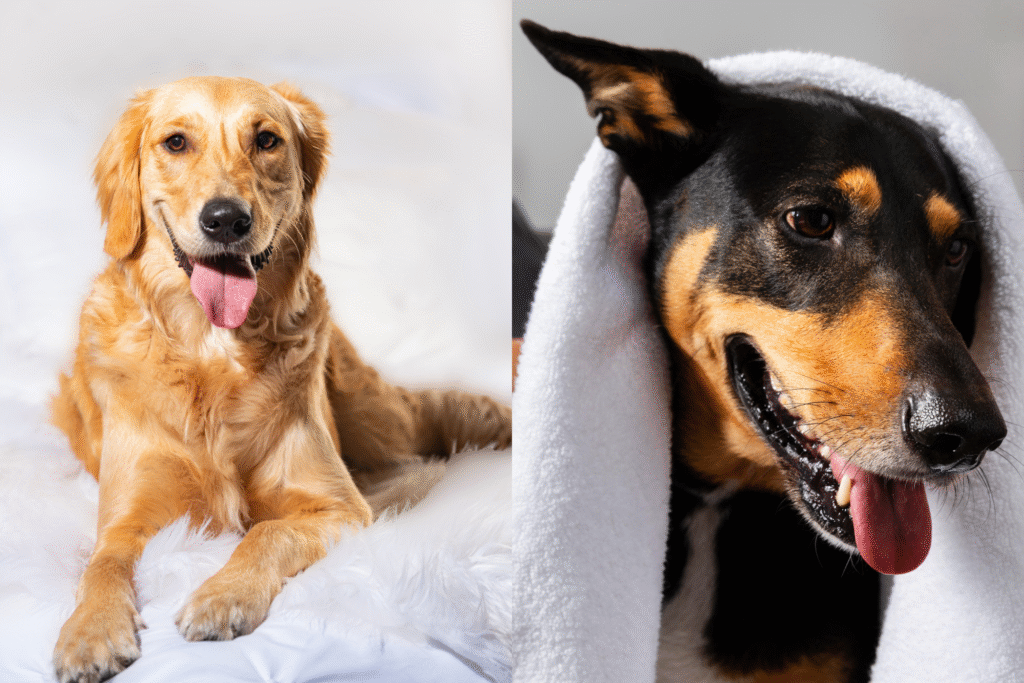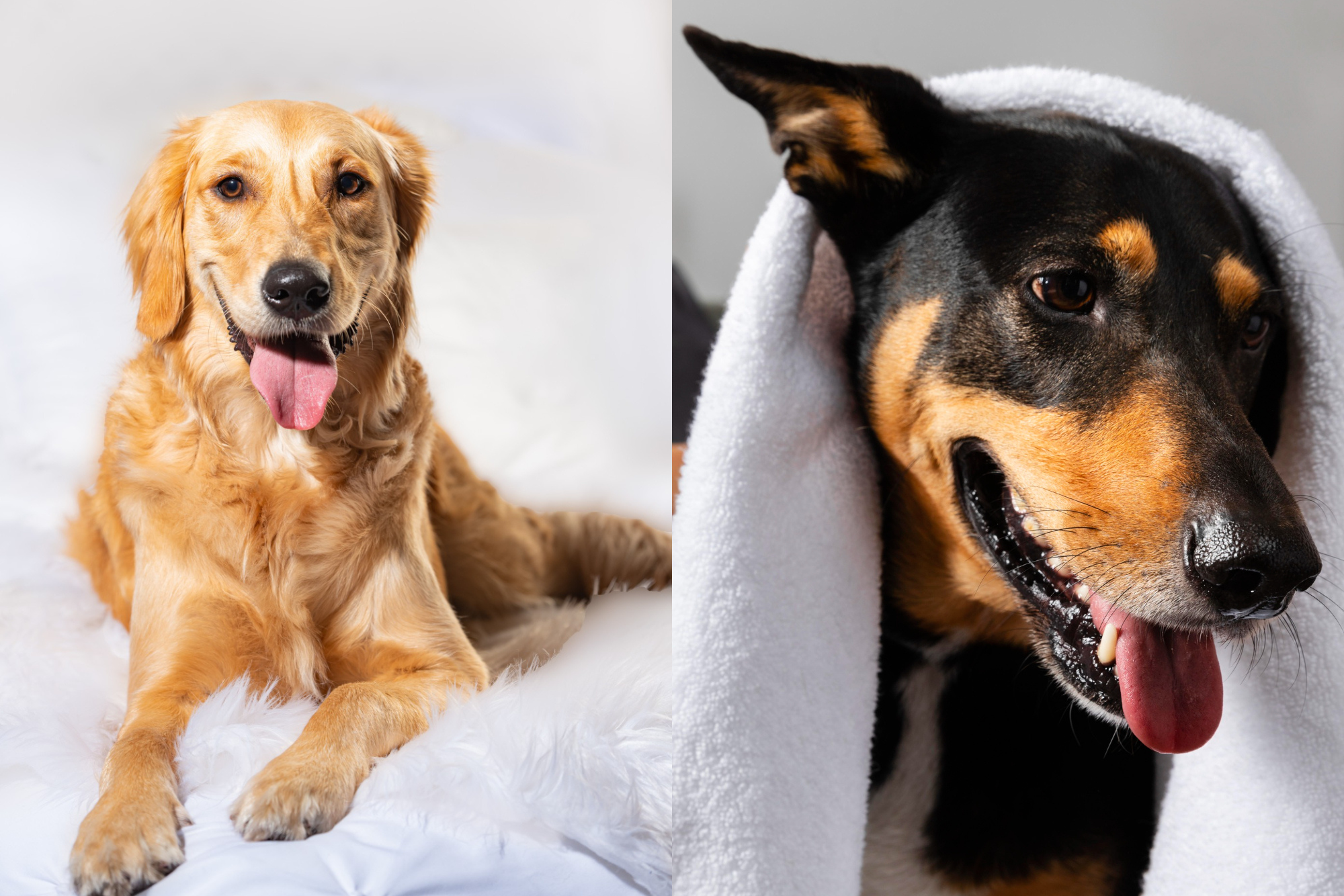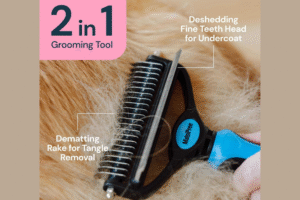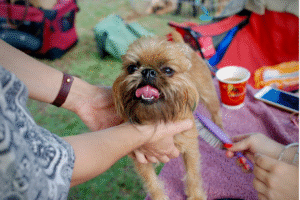Is it better to brush a dog’s hair wet or dry? If you’ve ever wondered this after bath time, you’re not alone. Veterinarians and professional groomers agree that the timing and method of brushing make a big difference to coat health, skin comfort, and your dog’s happiness. This post gives 7 vet-approved tips, explains exactly what happens if you brush wet fur, and provides a clear, practical solution so you always know whether to brush wet or dry.

Is it better to brush a dog’s hair wet or dry? The short, vet-backed answer
When asked is it better to brush a dog’s hair wet or dry, most vets answer: dry. Dry brushing reduces breakage, lets you find and remove tangles safely, and prevents the painful mat tightening that often happens when hair is soaked. There are limited exceptions (explained below), but as a rule: dry first, then bathe, then brush again once mostly dry.
Is it better to brush a dog’s hair wet or dry? What actually goes wrong if you brush wet
Understanding the risks helps explain the recommendation:
- Hair is weaker when wet. Wet hair stretches and breaks more easily — brushing can snap fragile strands.
- Mats tighten as they get wet. Water can cause knots to contract; brushing then often makes them worse and painful.
- Increased skin irritation. Pulling on wet fur means more tugging at the skin, which can cause redness or sores.
- Trapped moisture and infections. Tight mats that remain damp create warm pockets where bacteria and yeast thrive.
Veterinary dermatologists routinely warn owners that brushing soaking fur — especially when mats are present — increases the chance of damage and infection.
Is it better to brush a dog’s hair wet or dry? Exceptions and safe wet brushing
There are a few controlled situations where brushing damp hair can be helpful:
- Curly or woolly coats (Poodles, Bichons): A light, damp comb-through with a vet-approved leave-in conditioner can help detangle and reduce frizz.
- Post-conditioner detangling: If a conditioner or detangler designed for dogs is applied in the bath, very gentle combing with a wide-tooth comb can be used to remove loosened debris — but only before the coat dries.
- Short smooth coats: For some short-haired breeds, a gentle brush on towel-dried fur is usually safe to remove loose hairs.
Key rule: if you brush when not fully dry, make sure the coat is only slightly damp, use the right tools (wide-tooth comb, slicker for curls), and work extremely gently.
Is it better to brush a dog’s hair wet or dry? A practical step-by-step solution (vet-approved)
- Assess the coat type first — this decides tools and frequency.
- Brush dry before bathing — remove loose fur and tangles so water and shampoo can reach skin evenly.
- Bathe using dog-safe shampoo and conditioner if needed. Don’t use human products.
- Towel-dry thoroughly and use a pet dryer on low/cool until coat is ~80% dry.
- Brush when mostly dry — start with a wide-tooth comb or undercoat rake (if needed) and finish with a slicker or bristle brush.
- If you must detangle damp fur, apply a vet-approved detangler and comb gently from the tips toward the skin, holding the hair near the base to reduce pulling.
- Reward and check — always reward your dog and inspect for red spots, lumps, or parasites.
Following this process answers the practical part of is it better to brush a dog’s hair wet or dry for virtually every dog.
Is it better to brush a dog’s hair wet or dry? Recommended tools by coat type
- Short, smooth coats: bristle brush or grooming mitt (dry).
- Long, silky coats: slicker brush + wide-tooth comb (dry; damp ok only for curls with detangler).
- Double coats (Husky, German Shepherd): undercoat rake/deshedding tool (dry; never brush aggressive mats wet).
- Curly coats (Poodle, Bichon): slicker and comb; light damp detangling may help if product approved by your vet.
Using the correct tool reduces the stress of grooming and prevents problems that lead owners back to the “wet vs dry” question.
Is it better to brush a dog’s hair wet or dry? Frequency & vet tips
Vets suggest these baseline routines:
- Daily for long, silky, or curly coats.
- 2–4 times weekly for medium coats.
- Weekly for short, low-maintenance coats (unless heavy shedding season).
If you’re asking is it better to brush a dog’s hair wet or dry because matting or smell is an issue, increase brushing frequency and consult your vet or a professional groomer.
Final answer — Is it better to brush a dog’s hair wet or dry?
Yes — for most dogs, it is better to brush when the coat is dry. Wet brushing can cause breakage, tighten mats, and increase skin irritation. Only use careful, vet-guided damp brushing in specific cases (curly coats, post-conditioner detangling, or short smooth coats). Use the right tools, brush before bathing, dry well, and brush again once mostly dry.
If you follow the steps above, you’ll keep your dog’s coat healthy, reduce painful mats, and turn grooming into a calm bonding routine. When in doubt, ask your veterinarian or a certified groomer — they can recommend products and techniques tailored to your dog’s exact coat type.
When it comes to keeping your furry friend’s coat healthy, the answer to “Is it better to brush a dog’s hair wet or dry?” is clear — always brush your dog’s hair when it’s dry. Brushing wet fur can cause breakage, discomfort, and even painful skin irritation, especially for long-haired breeds. By sticking to dry brushing, you not only prevent damage but also make it easier to detangle knots, distribute natural oils, and maintain a shiny, smooth coat. Remember, regular grooming is more than just keeping your dog looking good — it’s essential for their comfort, health, and happiness.




